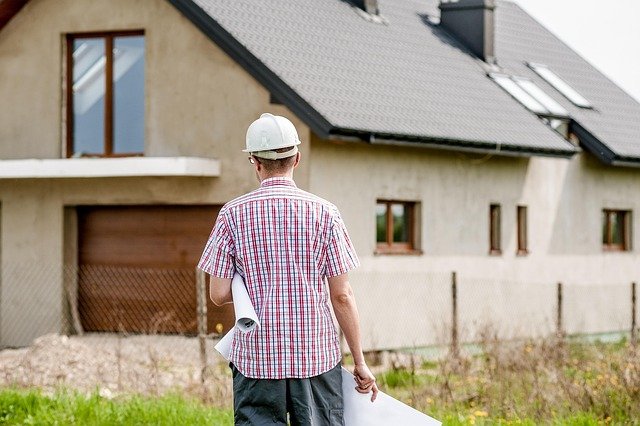Everything You Need to Know About Roof Replacement Grants
Roof replacement grants provide financial assistance to homeowners who need new roofing but lack the resources to cover the substantial costs. These government and nonprofit programs help qualifying individuals maintain safe, weatherproof homes by covering partial or complete roof replacement expenses. Understanding the various grant programs, eligibility requirements, and application processes can help homeowners access thousands of dollars in funding for essential roof repairs or replacements.

What Are Roof Replacement Grants?
Roof replacement grants are financial assistance programs designed to help homeowners, particularly those with limited income, repair or replace damaged roofing systems. Unlike loans, grants do not require repayment, making them an attractive option for qualifying households. These programs typically target homes with safety hazards, structural damage, or energy efficiency issues related to roofing.
Federal agencies, state governments, local municipalities, and nonprofit organizations offer various grant programs. The funding sources include the Department of Agriculture’s Rural Development program, weatherization assistance programs, and disaster relief funds. Some utilities companies also provide grants for energy-efficient roof upgrades that reduce heating and cooling costs.
Eligibility Requirements for Roof Replacement Grants
Most roof replacement grant programs establish specific criteria that applicants must meet to qualify for assistance. Income limitations represent the primary eligibility factor, with many programs requiring household income to fall below 80% of the area median income. Some programs specifically target low-income households earning less than 50% of the median income.
Property ownership requirements typically mandate that applicants own and occupy the home as their primary residence. The property must also demonstrate genuine need for roof replacement due to safety concerns, structural damage, or significant deterioration. Age restrictions may apply, with some programs prioritizing elderly homeowners or families with young children.
Geographic location affects eligibility, as many programs focus on rural areas, specific counties, or regions prone to natural disasters. Veterans, disabled individuals, and Native Americans may qualify for specialized grant programs with different criteria. Documentation requirements usually include proof of income, property ownership, contractor estimates, and photographs showing roof damage.
How to Apply for Roof Replacement Grants
The application process for roof replacement grants requires careful preparation and attention to detail. Begin by researching available programs in your area through state housing agencies, local community development offices, and nonprofit organizations. Contact program administrators to confirm current availability and specific requirements before starting your application.
Gather required documentation including tax returns, pay stubs, bank statements, property deeds, and detailed contractor estimates for the roof replacement work. Take clear photographs of existing roof damage from multiple angles to support your application. Complete application forms thoroughly and accurately, providing all requested information and supporting materials.
Submit applications during designated periods, as many programs operate on annual cycles with limited funding. Follow up with program administrators to ensure your application was received and complete any additional requirements promptly. The review process typically takes several weeks to months, depending on program demand and available funding.
Common Mistakes to Avoid When Applying
Several common errors can lead to application rejection or delays in processing roof replacement grant requests. Incomplete applications represent the most frequent problem, often resulting from missing documentation or unfilled sections. Carefully review all requirements and double-check that every item is included before submission.
Applying to inappropriate programs wastes time and resources. Research each program’s specific focus areas, geographic limitations, and target demographics to ensure your situation matches their criteria. Some programs prioritize energy efficiency improvements while others focus on safety hazards or disaster recovery.
Missing application deadlines eliminates funding opportunities, as most programs operate on strict schedules with limited funding windows. Mark important dates on your calendar and begin the application process well in advance of deadlines. Failing to obtain multiple contractor estimates may also weaken your application, as most programs require competitive pricing documentation.
Why Roof Replacement Grants Are a Great Option
Roof replacement grants offer significant advantages over traditional financing methods for qualifying homeowners. The primary benefit involves receiving funds that never require repayment, unlike loans that add monthly payment obligations to household budgets. This feature makes grants particularly valuable for fixed-income households or families facing financial hardship.
Grant programs often connect recipients with pre-approved contractors who understand program requirements and quality standards. This arrangement simplifies the contractor selection process and helps ensure work meets program specifications. Many grants also include project oversight to verify proper installation and materials usage.
The long-term benefits extend beyond immediate roof replacement needs. New roofing systems improve energy efficiency, reduce utility costs, and increase property values. Safety improvements protect families from weather-related hazards and prevent additional structural damage that could result from continued roof deterioration.
| Program Type | Provider | Coverage Amount | Primary Focus |
|---|---|---|---|
| USDA Rural Development | Federal Government | Up to $20,000 | Rural homeowners, income-qualified |
| Weatherization Assistance | State/Local Agencies | Up to $8,000 | Energy efficiency improvements |
| Habitat for Humanity | Nonprofit Organization | Varies by location | Low-income families, sweat equity required |
| Veterans Affairs SASH | Federal Government | Up to $6,800 | Disabled veterans, safety modifications |
Prices, rates, or cost estimates mentioned in this article are based on the latest available information but may change over time. Independent research is advised before making financial decisions.
Roof replacement grants provide valuable opportunities for homeowners who need new roofing but lack sufficient financial resources. Success in obtaining grant funding requires understanding program requirements, preparing complete applications, and avoiding common mistakes that lead to rejection. While the application process demands time and effort, the potential to receive thousands of dollars in non-repayable assistance makes these programs worth pursuing for eligible households.




